Estrogen, as you probably know already, is the main female sex hormone, as opposed to men whose veins are flowing with testosterone.
Women need estrogen for their menstrual functioning, breast development, and mood regulation, but men also need small amounts, for minor bodily functions such as bone strength and mood regulation once again.
Many believe that since estrogen is a female hormone, there’s no chance that the hormone could be behind their acne, but they’re dead wrong. With the modern sedentary lifestyle, the abundance of toxic chemicals hidden in personal care products, and our default junk food diet, men worldwide are transforming into walking estrogen tanks.
In alternative health circles, this phenomenon has been dubbed “estrogen dominance”; where estrogen runs riot and completely crushes testosterone. Estrogen dominance is reportedly pulling the strings of low fertility, mental sluggishness, fatigue, and maybe even cancer.
Could high estrogen levels be causing acne too?
Estrogen – not a problem for women
Firstly. there’s clear evidence in the real world that estrogen is a harmless hormone for females.
Every month, every year, millions of women world experience acne that ebbs and flows with the tide of their menstrual cycle. The hormonal cycle goes like this: a woman’s estrogen levels fall after ovulation, bottom out mid-cycle, before rising against before the next ovulation. It’s pretty telling that the affected women nearly always complain of pimples inbetween ovulation; when estrogen is low.
Read Annihilate Your Acne – get the diet that could transform your skin!
There are clear scientific mechanisms for protective effects. When bloodstream estrogen climbs upwards, it can bind to androgen receptors normally occupied by testosterone, including receptors in the sebaceous glands. Thus, testosterone is prevented from stimulating oil (sebum) production, and acne grinds to a halt.
A more obscure protective power is that when estrogen is metabolised in the liver, it increases sex hormone binding globulin (SHBG). SHBG has a high affinity for testosterone, binding to its structure and preventing it from stimulating androgen receptors.
Furthermore, SHBG prevents testosterone from converting to DHT, the most vicious androgen for acne. Women are ten times more sensitive to DHT’s powers than men.
The complete collection of studies
In short, elevated estrogen isn’t particularly worrying for women. After all, estrogen is a woman’s predominant sex hormone, so the human body would be pretty amateurishly designed if such a healthy hormone led to acne.
Several well-designed studies have confirmed its safety, like this one which gave estrogen supplements to 257 female acne patients aged 15-49. 93.7% of women improved compared to 65.4% of the placebo group; the estrogen was “safe and effective“.
In this study, compared to 28 controls, 60 female acne patients had significantly lower levels of estrogen, but much higher testosterone and cortisol (the main stress hormone).
Next – the 6 best vitamins and minerals for naturally clear skin
This study was similar to the first, testing 270 women aged between 14 and 45. Compared to a placebo, the estrogen supplement (an oral contraceptive) “significantly reduced acne lesion counts more effectively than placebo“.
Now we have the biggest and best: a study performed in North India on over 1000 women. The scientists detected much lower estrogen levels in acne patients, and commented that “when a woman’s estrogen levels decline, as they do just before the beginning of a menstrual cycle, acne may worsen“.
Tons of female internet posters believe that estrogen dominance is the all-conquering villain behind their acne, but the real evidence points to estrogen deficiency.
Don’t rush out and buy an estrogen pill though, because 1) you only need average levels, as too much can wreak your health, and 2) the studies on men are fur murkier.
In this 1992 study, scientists gathered 19 men aged between 20 and 30, and examined their testosterone, SHBG and estrogen. The acne patients had dramatically higher bloodstream estrogen levels, and the scientists also identified a culprit: “elevated E2 levels might affect the inflammatory response of acne vulgaris“.
Why bread and pasta are a massive cause of acne
Yet another study gathered 45 acne patients and 38 healthy patients. Interestingly, testosterone was perfectly normal, the classic scapegoat behind acne, but estrogen levels were 40% higher than usual. Among females, testosterone was 45% higher than normal, and estrogen was about the same.
Is high estrogen an acne risk for men?
Logically, estrogen should have minor benefits for men as well, by blocking testosterone and its oily skin offspring in the same way as women. The roadblock, however, is that men’s skin is far less sensitive to testosterone.
What’s more, we discussed in this article how contrary to popular belief, feasting on antioxidants and restricting insulin-spiking carbohydrates can allow you to have high androgen levels and still not get acne. Indeed, average testosterone levels have nearly halved over the last century, yet acne appears to have got much worse. Increasing estrogen levels will slightly reduce a man’s oily skin, but the fertility issues and sluggishness make it an unworthy quest.
So what about the opposite: could sky high estrogen really be causing acne?
The studies above mention inflammation, but there’s no concrete evidence for it. Excessive estrogen could interfere with insulin signalling, but once again, there’s no concrete evidence.
A more plausible theory is that unhealthy estrogen metabolites are actually to blame. Different forms of estrogen may have different effects; alternative health websites theorise that 2-hydroyestrogen protects against breast cancer, while 8-hydroxyestrogen and 16-hydroxyestogen cause it.
As for acne, this study on estrogen metabolites concluded that 16-hydroxyestrogen correlated closely with increased production of inflammation chemicals like TNF-a.
7 acne-clearing topical treatments which are 100% natural
In this 2004 study, scientists concluded that in patients with arthritis, an inflammatory disorder with root causes surprisingly similar to acne, levels of 16-hydroxyestrogen were substantially higher. This study was interesting; whereas 2-hydroxyestrogen was benign, 4-hydroxyestrogen generated large volumes of free radicals.
This large review concluded that overall, the estrogen-inflammation relationship was extremely complicated, but that 16-hydroxyestrogen was pro-inflammatory while 2-hydroxyestrogen was generally anti-inflammatory. Another study examined patients riddled with arthritis and found only 10% of the 2-hydroxyestrogen levels of healthy people.
Not every study is 100% convincing, but there’s a strong chance that inflammatory estrogen metabolites are counteracting the acne benefits of reducing testosterone.
Another possibility is that because elevated estrogen is known to suppress progesterone levels, DHT could creep upwards. Progesterone is needed to control 5-alpha reductase, the enzymes that facilitate the conversion of testosterone to DHT (which is how all bodily DHT is manufactured). Compared to testosterone, DHT is far more powerful at stimulating the sebaceous glands to pump out more oil.
Your conclusion then? With men, the science is murky and clouded, hard to read, but there’s a strong chance that higher estrogen does contribute to acne. Consider the unpleasant symptoms of male estrogen dominance:
ONE: a growth of male breast tissue, known as gynecomastia or “bitch tits”.
TWO: low sex drive. Erectile dysfunction is especially common.
THREE: a higher stroke risk. Two much estrogen is a perfect recipe for blood clots in men.
FOUR: heart attacks. Estrogen dominance in older men has tentative links to cardiovascular disease.
FIVE: weight gain, resulting in higher estrogen and ever spiralling body fat accumulation due to estrogen being manufactured in fat cells.
SIX: prostate cancer. DHT is commonly blamed for this, but studies show that estrogen may fuel prostate cancer more.
Men’s bodies are not designed to be packed with estrogen. If high estrogen causes such vicious side effects in men, but is harmless in women, then there could easily be undiscovered connections to acne.
The creeping menace of xenoestrogens
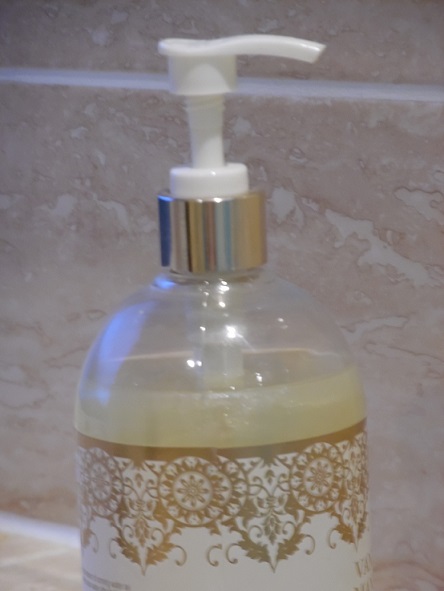 Which brings us to a closely related subject. Even if estrogen dominance is completely unconnected to acne, no man should desire depressed testosterone counts.
Which brings us to a closely related subject. Even if estrogen dominance is completely unconnected to acne, no man should desire depressed testosterone counts.
However, a massive proportion of us have them today, thanks to xenoestrogens, a sinister family of chemicals which includes phthalates, BPA and triclosan.
Xenoestrogen are estrogen mimics; they are structurally similar to real estrogens, binding to estrogen receptors and blocking the activity of testosterone. Xenoestrogen can be found in personal care items, shower curtains, school lunchboxes- you name it.
Sea buckthorn oil – a natural secret for acne and oily skin
Where soft flexible plastics lurk, so to do xenoestrogens. They are ubiquitous in our civilisation and are flooding our bodies at an alarming rate. Furthermore, many boast their own unique dangers.
For example:
BPA – found in tin cans, old drinking water pipes, and smooth-feeling shower curtains. BPA can lower children’s IQ via exposure in the womb, and one study found that BPA ingested through plastic bottles or cans could raise human blood pressure within hours.
BPA is linked to structural damage to the brain, insane hyperactivity and aggression, and the subtle stimulation of prostate cancer cells.
ATRAZINE – a pesticide so estrogenic that it turns male frogs into females, females which are incapable of producing. The frogs that didn’t turn female “lacked male reproductive behaviour, had reduced male features, and severely reduced sperm and low fertility“.
PHTHALATES – these chemicals, used to give plastic their signature strength and flexibility, are linked to birth defects, low sperm counts, and delayed puberty in males. Prenatal exposure lowers children’s IQs and impairs a child’s future ability to concentrate, not to mention their memory and reasoning skills.
Xenoestrogens, AKA endocrine disruptors, are one of the greatest health threats of modern times.
Even the WHO has taken notice, reporting in 2013 that endocrine disruptors could trigger “obesity, infertility or reduced fertility, learning and memory difficulties, adult-onset diabetes or cardiovascular disease, as well as a variety of other diseases“.
In men, average sperm mobility has plummeted by over 25% and French sperm counts fell by 33% from 1989 to 2005. Overall fertility is dropping like a stone. Cancer keeps on rising, especially breast cancer rates in women, which are tightly linked to wildly fluctuating estrogen.
Do any of those problems sound familiar to you? If so, xenoestrogens may be a hidden menace behind them.
As for acne, xenoestrogens must be detoxified by the body, and this commonly depletes your glutathione stocks, the all-important homemade antioxidant. Many xenoestrogens have inflammatory properties as well.
Zinc – the number one mineral for clear skin (reduces acne by 49.8%)
In my eBook Annihilate Your Acne, there’s a detailed guide on how to outlaw xenoestrogens once and for all. For now, they often lurk in shower curtains, toothpaste, mouthwash, shampoo, handwashes, shower gel, deodorant, herbicides, pesticides, plastics (the more flexible, the more phthalates) and tin cans.
Forget estrogen, get more zinc instead
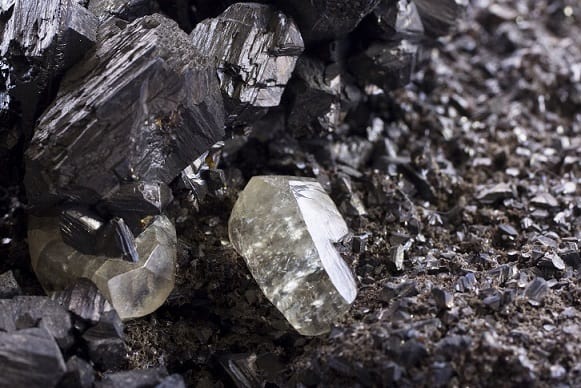 Estrogen does have mild importance in acne, but xenoestrogens aside, it’s mostly a sideshow. If you’re currently relying mostly on topical treatments, then one weapon which you cannot ignore is zinc.
Estrogen does have mild importance in acne, but xenoestrogens aside, it’s mostly a sideshow. If you’re currently relying mostly on topical treatments, then one weapon which you cannot ignore is zinc.
Zinc is the single most important mineral for an acne patient. It keeps your immune system on a leash, preventing it from reddening and swelling pimples, and even enhances the oily skin powers of vitamin A.
This study found that zinc reduced acne levels by 49.8% after eight weeks. This study concluded that 54.1% of acne patients are deficient in zinc.
If you’re a beginner to clearing acne naturally, then zinc, not estrogen, is your starting point. How do you get more? Either take a supplement or rearrange your diet. Foods rich in zinc include seeds, eggs, oysters, fish and other seafood.
Personally, I like to take a supplement of at least 15mg (the RDI) daily, to get my acne bases well and truly covered. My favourite supplement by far is this MegaFood Zinc (amazon link).
This brand is completely pure, and free from all harmful fillers. Also, the zinc comes with a bonus blend of healthy fruits and vegetables, including parsley leaf, beetroot, and broccoli.
Another great option is this Thorne Research Zinc (amazon link), which is in the well-absorbed zinc picolinate form.
Vitamin C is another vital nutrient for acne, as according to this study, acne patients have 40% less in their bloodstream than average. Specifically, vitamin C is an incredible supplement for anxiety-related acne, since it clears the stress hormone cortisol from the bloodstream.
Vitamin C is also excellent at reducing old acne scars, since it’s a co-factor behind the collagen proteins involved with wound healing. It also happens that increasing collagen production can strengthen the skin and delay ageing.
If you’d prefer a vitamin C supplement without any zinc then I’d recommend this Garden of Life Raw Vitamin C (amazon link).
Overall, controlling estrogen is nowhere near as important as basic (yet powerful) nutrients such as these.
Conclusion – what you should do
Again, you should eradicate as many xenoestrogens from your life as you possibly can, but generally, focussing on estrogen is a waste of your time and money.
Unlike DHT and testosterone, the science is somewhat clouded and unclear. It’s highly likely that elevated estrogen causes acne in men, but if you banish all xenoestrogens, then you almost certainly won’t have a problem anyway.
Some other causes include obesity (since estrogen is generated in fat cells), estrogenic foods like soy, flax and liquorice, and wolfing down too many grains. Unfortunately, beer is also mildly estrogen, due to the classic hops herb it contains.
If you’re a woman who’s convinced by menstrual problems, fertility issues or general lethargy that estrogen is behind your acne, then the best supplement is a DIM formula like Estroblock. DIM and its parent compound indole-3-carbinol are partially behind the well known estrogen-lowering powers of broccoli.
DIM has an excellent track record among hormonal women, and serves up a nice reduction in the pro-inflammatory NF-KappaB as a bonus power. The best brand is this Estroblock Pro Triple Strength. Alternatively, you could just eat tons of broccoli, kale and Brussel sprouts, as they also contain vitamin C, sulforaphane, and bonus compounds.
That said, never blindly trust a supplement that claims to eradicate estrogen dominance. Remember that the most important acne hormone by a long shot is insulin. Read more about it here.
NEXT: discover the root causes of acne and banish your pimples forever
Thanks for reading!
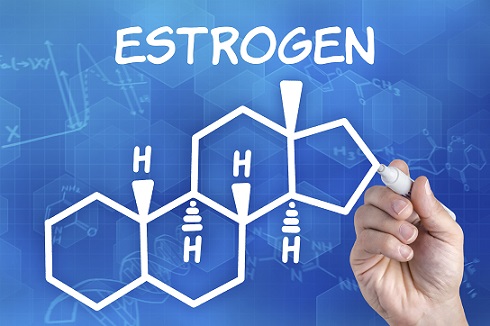

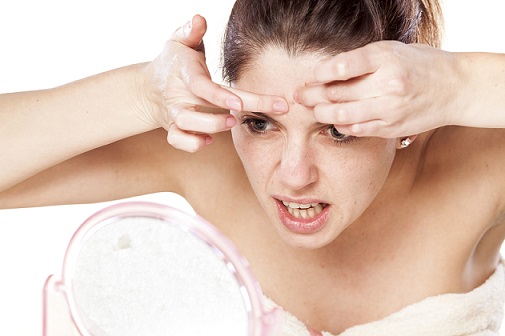
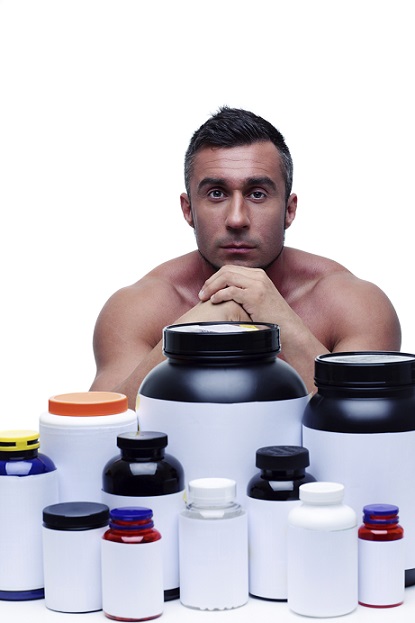
Is it worth switching to low fat milk for men to reduce our endogenous estrogen exposure?